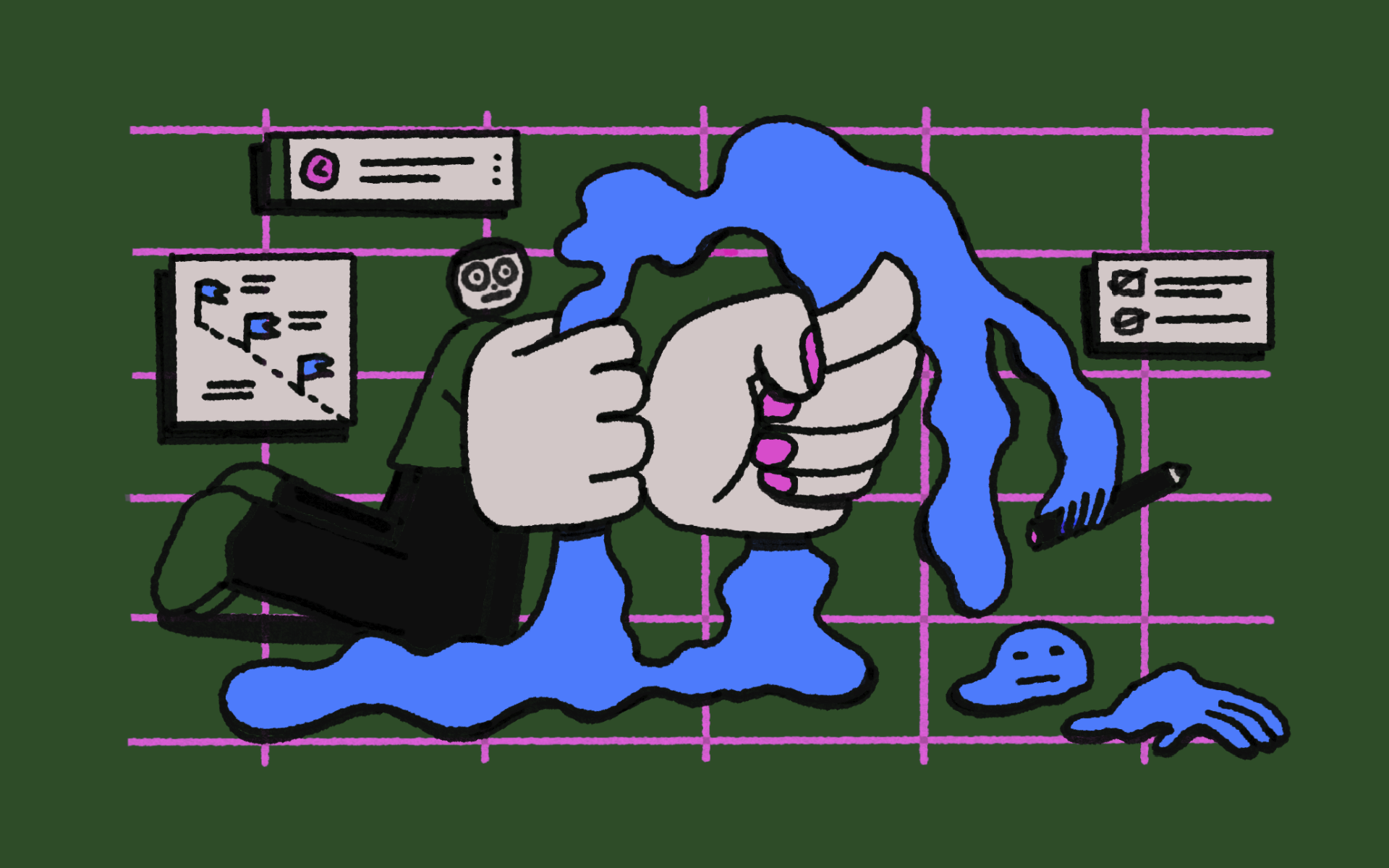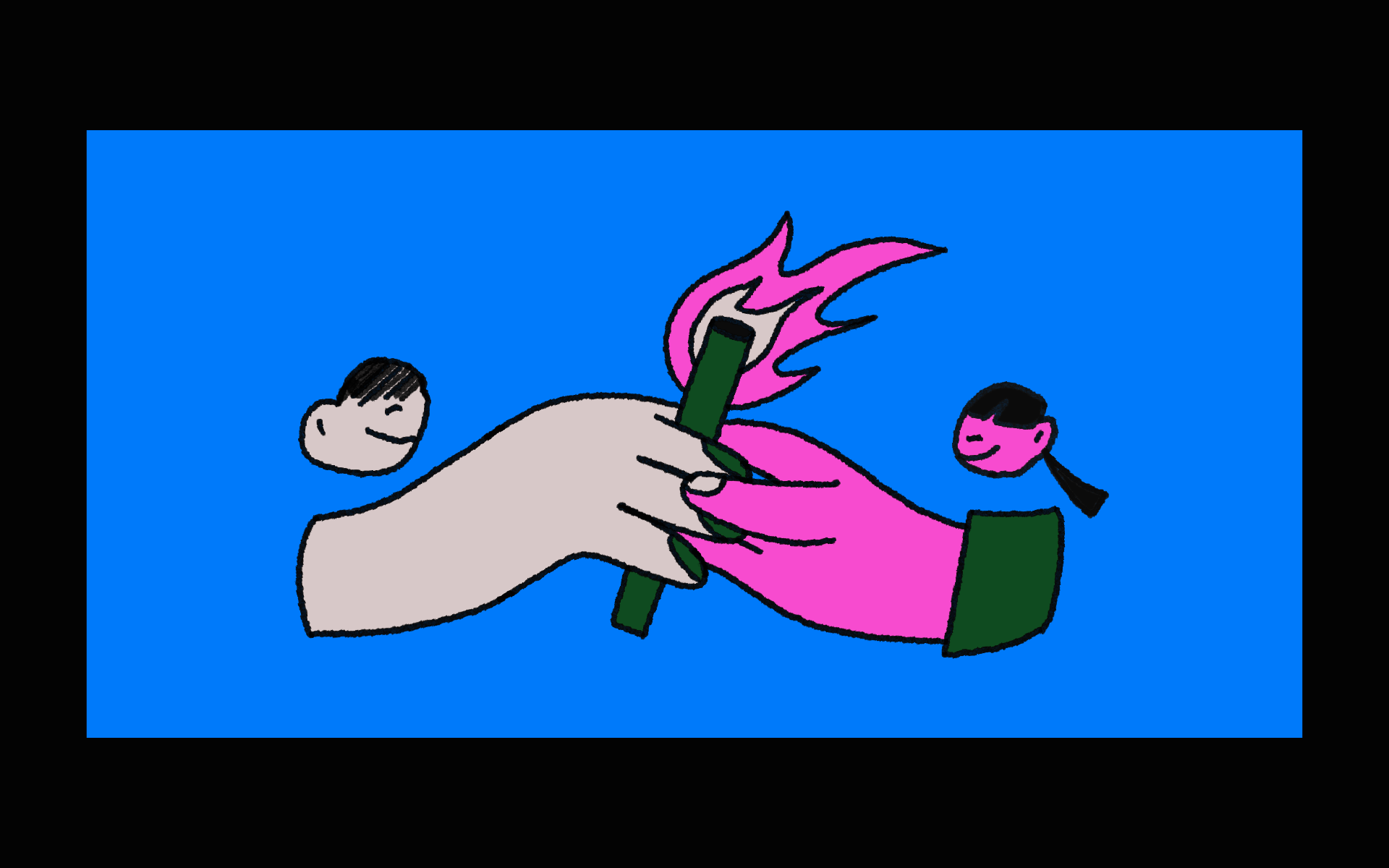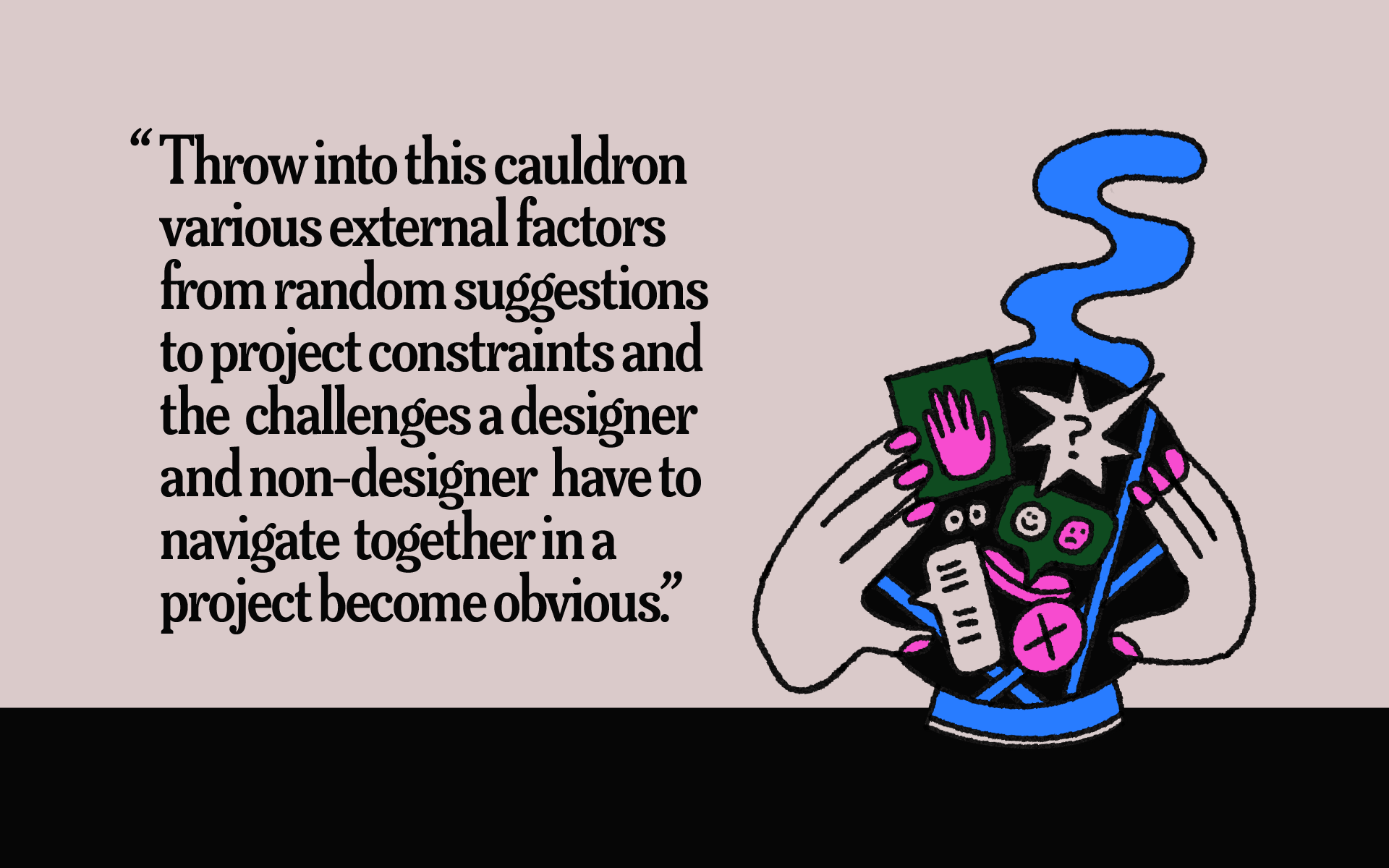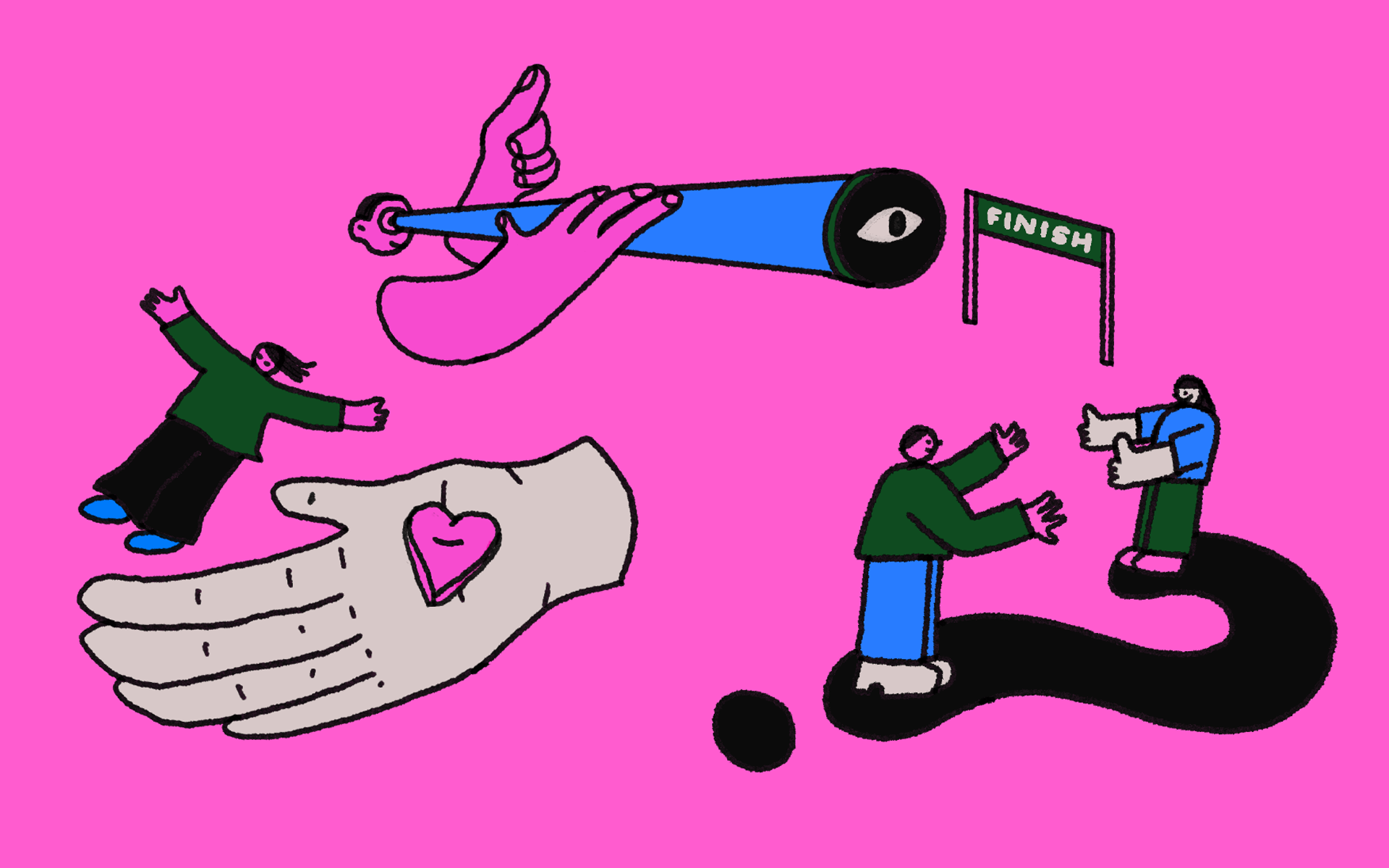How to: Working with creatives
NAVIGATING DESIGN PROJECTS
AS A NON-DESIGNER
AS A NON-DESIGNER

©Somewhere Else
If you’re a project manager, director, or CEO who has worked on design projects, you’ve probably wondered why working with designers isn’t as straightforward as managing an objective excel sheet with a precise outcome. To answer that: designers are tasked to imagine, reinvent, and conjure into existence something that doesn’t yet exist. No doubt having to manage design projects would prove to be a challenge for any non-designer.
To unpack it further, picture the “mechanics” of creativity as something that’s fluid and malleable— involving cycles of ideation, testing, refinement, and revision. With each iteration, concepts and ideas evolve with each step informing the next… yet the final outcome might very well just branch out from revisiting the first initial thought.
Throw into this cauldron various external factors such as stakeholders’ personal experiences, random suggestions, conflicting requests, complexities, constraints— and the challenges a designer and non-designer have to navigate together in a project become obvious.
So, how do we manage and set design projects up for success?
Not many actually recognise the designer’s heart for their clients. In this light, a positive client-designer relationship is actually an endearing one held together by a shared desire to overcome an agreed challenge together.
![]()
It is only in this vehicle of mutual trust can the client and the designer start to negotiate and develop a solution together. How well a designer conveys the logic of the proposed creative solution (how sound it is), and how well it is understood and accepted by the client will then inform how the final work will take shape.
![]()
![]()
To unpack it further, picture the “mechanics” of creativity as something that’s fluid and malleable— involving cycles of ideation, testing, refinement, and revision. With each iteration, concepts and ideas evolve with each step informing the next… yet the final outcome might very well just branch out from revisiting the first initial thought.
Throw into this cauldron various external factors such as stakeholders’ personal experiences, random suggestions, conflicting requests, complexities, constraints— and the challenges a designer and non-designer have to navigate together in a project become obvious.
So, how do we manage and set design projects up for success?
Defining the Overarching Challenges, Goals, & Standards Clearly
Underlying every design project and behind every designer’s creative endeavour lies a deep desire to solve the project’s challenge (the basis of the client’s brief). How “good" the proposed solution is then depends on how clearly “good” is defined by the client and understood by the designer. From alignment of the problem expectations to project expectations, the clear establishment of these primary factors are the first steps to a project’s success. Yet often, questioning the brief to achieve greater clarity is seen as inefficient and not deemed as a crucial part of the process.You Jump, I Jump

It is only in this vehicle of mutual trust can the client and the designer start to negotiate and develop a solution together. How well a designer conveys the logic of the proposed creative solution (how sound it is), and how well it is understood and accepted by the client will then inform how the final work will take shape.
Easier Said, How Can Non-designers Navigate Design Projects Without
Falling Off?
Falling Off?

1. Go in Willing to Trust
Without a strong basis of trust and conviction that every party desires the best for the project, it is difficult to create a safe space where discussion of a creative yet logical solution can materialise. Before each time you respond to a designer’s work, trust that it was done with the best intentions for the project.
2. Establishing Workflow Boundaries & Expectations
When kick-starting a project, stating explicitly how you’d like to work: “Show me what you’ve got”, or “I just want it designed like this”, perhaps even “Could we ideate together?” tells everyone how to navigate you. There isn’t a right or wrong, it’s about removing ambiguities, and making room for discussions that facilitate trust and understanding for all throughout the project.
3. Conveying Feedback
When a proposal falls short, instead of trying to solve the issue for the designer, take time to explain why it’s not working. It is only when the designer understands the reasoning why proposal 1 doesn’t work can they confidently re-navigate the challenge. Many times, non-designers in trying to help, offer a suggestion (then adopted by the designer), only to find proposal 1B still missing the mark— the root of the problem unaddressed.
4. Be Ready to Redefine the Win
Instead of focusing on getting it right from the get go, embrace the process. Easier said than practiced, this also means learning how to navigate ambiguity comfortably when exploring your businesses’ boundaries with the creative solution. Contrary to common belief, chasing options does not maximise creative fees.
Being open to “wayward” explorations in the early stages for example, helps parties to ascertain boundaries and allows for happy accidents. Understandably out of fear, clients often interpret a lack of understanding on the designers’ part when faced with work that’s too “out there”. Being intentional and keeping each iteration purposeful however, aims for a fruitful design process that meets objectives efficiently.
5. Humans with a Common Goal
Behind each design update, conceptual connections and patterns actually take form between iterations. Being aware of the designer’s thoughts, struggles, and even feelings throughout the project is advantageous. This creates a great project culture in the long-run, especially if doubts arise in the later stages.
Vice versa, articulating missed expectations early instead of at the tail-end of projects (even if it may seem unimportant or uncertain) enables for a more productive process too. This helps everyone on the team stay within the safe grounds of creative negotiation.

All Set & Ready
Simple as that? Well… yes. While understanding the technicalities of design helps, it’s more sensible to simply remember that we’re all on the same team desiring the best outcome. Whatever your role is and however far along you’re in on a design project, we hope your team members know that you’re on their side too.


